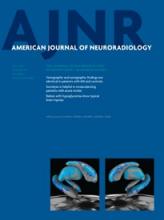Abstract
BACKGROUND AND PURPOSE: 4D flow MR imaging is an emerging technique that allows visualization and quantification of 3D blood flow in vivo. However, representative studies evaluating its accuracy are lacking. Therefore, we compared blood flow quantification by using 4D flow MR imaging with US within the carotid bifurcation.
MATERIALS AND METHODS: Thirty-two healthy volunteers (age 25.3 ± 3.4 years) and 20 patients with ≥50% ICA stenosis (age 67.7 ± 7.4 years) were examined preoperatively and postoperatively by use of 4D flow MR imaging, with complete coverage of the left and right carotid bifurcation. Blood flow velocities were assessed with standardized 2D analysis planes distributed along the CCA and the ICA and were compared with US at baseline and postoperatively in patients. In addition, we tested reproducibility and interobserver agreement of 4D MR imaging in 10 volunteers.
RESULTS: Overall, 101 CCAs and 79 ICAs were available for comparison. MR imaging underestimated (P < .05) systolic CCA and ICA blood flow velocity by 26% (0.79 ± 0.29 m/s vs 1.06 ± 0.31 m/s) and 19% (0.72 ± 0.21 m/s vs 0.89 ± 0.27 m/s) compared with US. Diastolic blood flow velocities were similar for MR imaging and US (differences, 9% and 3%, respectively; not significant). Reproducibility and interobserver agreement of 4D flow MR imaging was excellent.
CONCLUSIONS: 4D flow MR imaging allowed for an accurate measurement of blood flow velocities in the carotid bifurcation of both volunteers and patients with only moderate underestimation compared with US. Thus, 4D flow MR imaging seems promising for a future combination with MRA to comprehensively assess ICA stenosis and related hemodynamic changes.
ABBREVIATIONS:
- CCA
- common carotid artery
- CE-MRA
- contrast-enhanced MR angiography
- ECA
- external carotid artery
- PC
- phase contrast
- US
- 2D duplex sonography
- © 2013 by American Journal of Neuroradiology
Indicates open access to non-subscribers at www.ajnr.org












